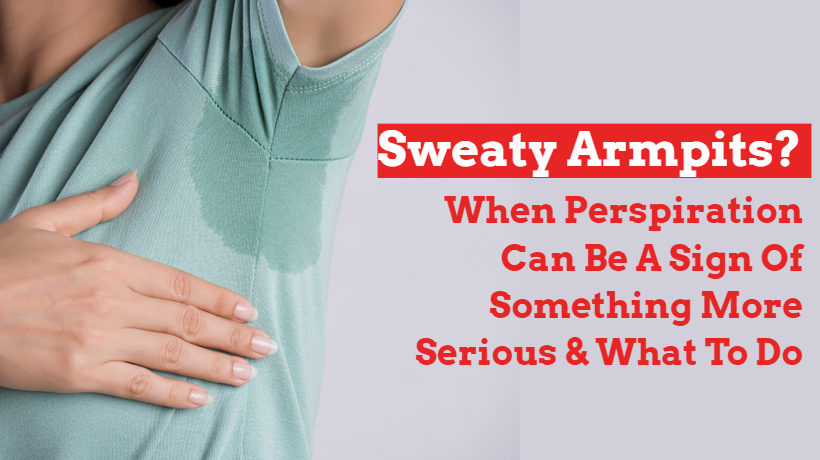It’s no secret that sweaty armpits go hand-in-hand (or hand-in-pit, for that matter) with the summertime heat. But how do you know if your perspiration is just a normal reaction to the seasonal weather or a more serious health issue?
Sweating is a vital bodily function, responsible for regulating our body temperature. When our body temperature surpasses its usual 98.6℉, our bodies respond by releasing sweat from our sweat glands. Once our sweat evaporates from the surface of our skin, our bodies begin to feel cooler and more comfortable. The only downside? When our sweat mixes with the bacteria on our skin, it can create an unpleasant odor.
Many people tend to sweat a lot when they’re feeling hot, when they exercise, when they feel anxious or stressed, or when they have a fever. But for those with hyperhidrosis, this natural bodily function can become a constant problem.
Hyperhidrosis is a medical condition that causes people to sweat profusely and unexpectedly. Although it is true that some people sweat more than others, people with hyperhidrosis may sweat excessively when they are sitting, cold, or calm. Aside from the physical discomfort this condition can cause, it can also give people social anxiety or embarrassment.
Approximately 15.3 million people in the United States are estimated to have hyperhidrosis, according to the National Institute of Health. Although many people with hyperhidrosis may inherit the disorder through familial genes, there are also many other people who develop hyperhidrosis as a result of another medical condition. For these people, the sweating may occur all over the body or solely in one area. Conditions that can cause secondary hyperhidrosis include:
- Acromegaly
- Anxiety conditions
- Cancer
- Carcinoid syndrome
- Certain medicines and substances of abuse
- Glucose control disorders
- Heart disease, such as heart attack
- Overactive thyroid
- Lung disease
- Menopause
- Parkinson disease
- Pheochromocytoma (adrenal gland tumor)
- Spinal cord injury
- Stroke
- Tuberculosis or other infections
However, aside from hyperhidrosis, there is also an abundance of other reasons for excessive sweating.
“Some people just sweat more than others, just like some people run faster than others,” thoracic surgeon Osita Onugha, MD explains in an article for Prevention. Other reasons besides genetics include weight issues, drinking too much alcohol, hormonal changes, and smoking.
So what are some helpful ways to beat the sweat include over-the-counter antiperspirants. Unlike deodorant, which only targets the odor, antiperspirants target the sweat glands to temporarily plug the ducts and hold off the sweat. OTC antiperspirants generally come in varying strengths, including regular, clinical, and prescription. If OTC antiperspirants don’t help, your doctor can prescribe a stronger antiperspirant or oral medications that will get the job done.
Another solution to those sweaty pits includes botox. Botox injections in your armpits can block sweat-stimulating chemicals and ease excessive sweating for up to six months, according to the AAD. For severe cases of hyperhidrosis, you could even opt to have your sweat glands surgically removed.
Additionally, miraDry is an FDA-approved procedure that actually eliminates the sweat glands in your armpit or other targeted areas using electromagnetic energy. Even though it is an effective solution, the procedure can be expensive, costing up to $3,500 with multiple treatments, and is not typically covered by insurance.
In a pinch and need to hide those sweaty underarms fast? Dr. Corinne Erickson, a dermatologist at Texas Health Presbyterian Hospital Dallas, recommends underarm pads and sticking to dark, loose-fitting clothing that will better conceal wet spots.



